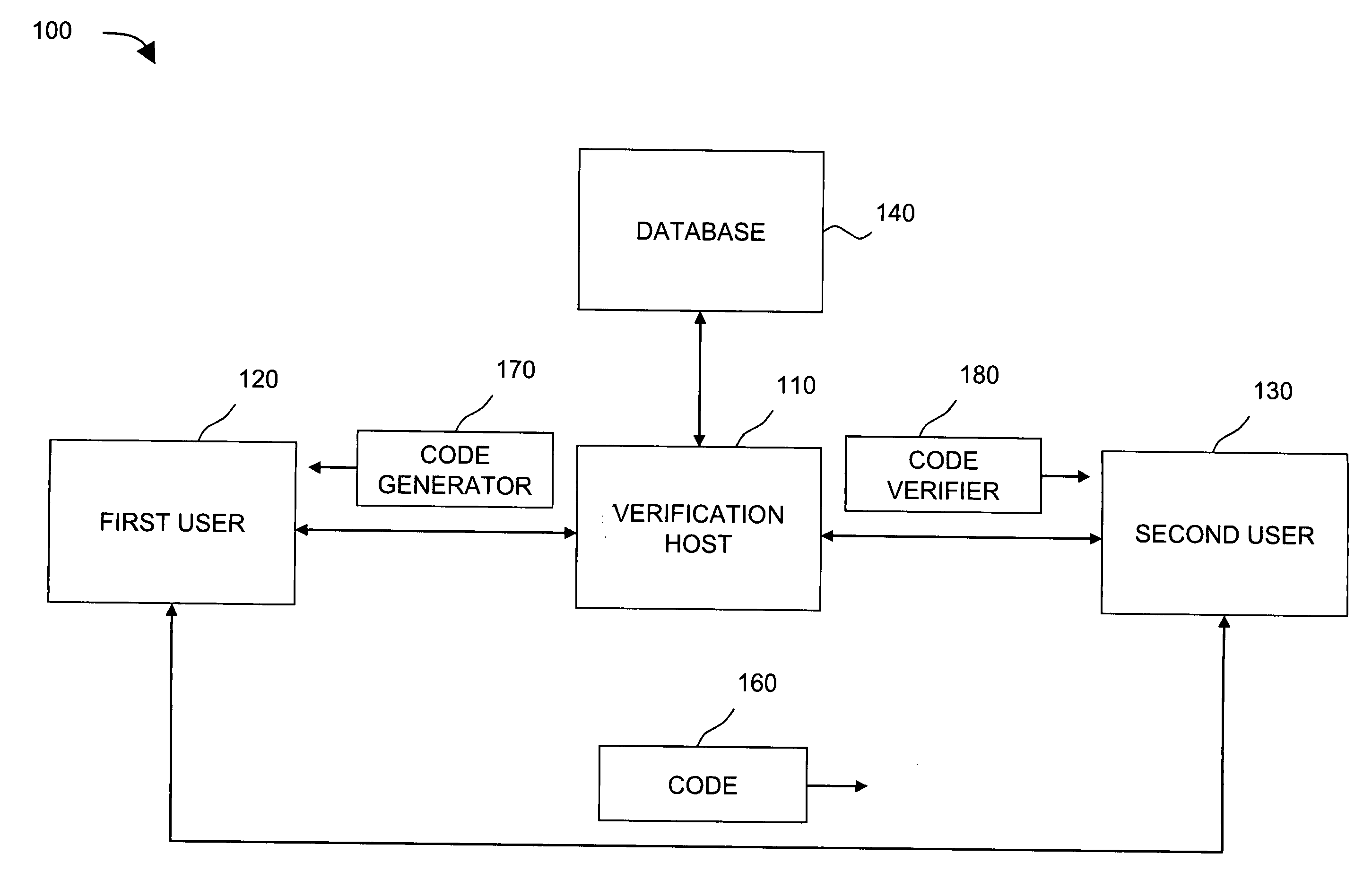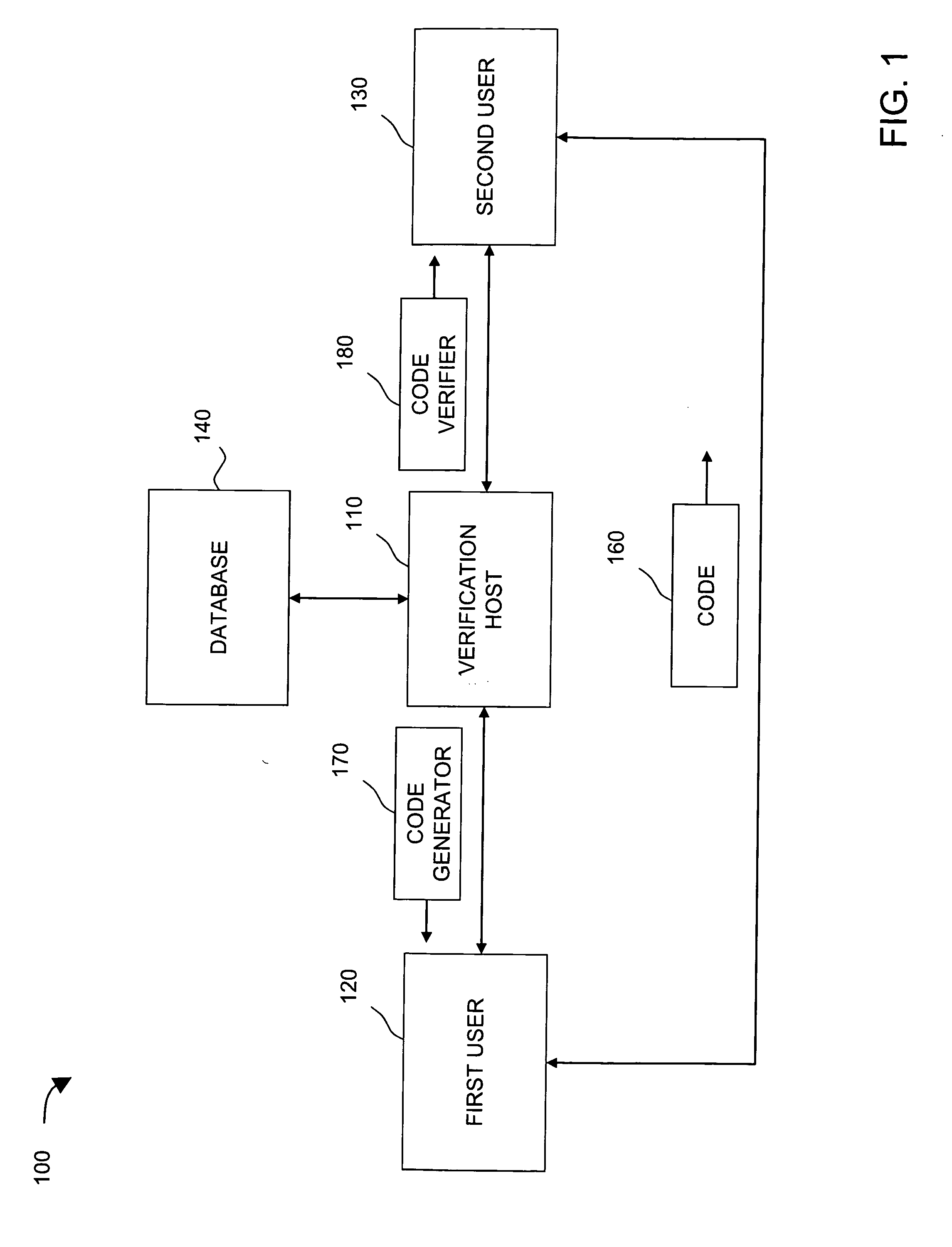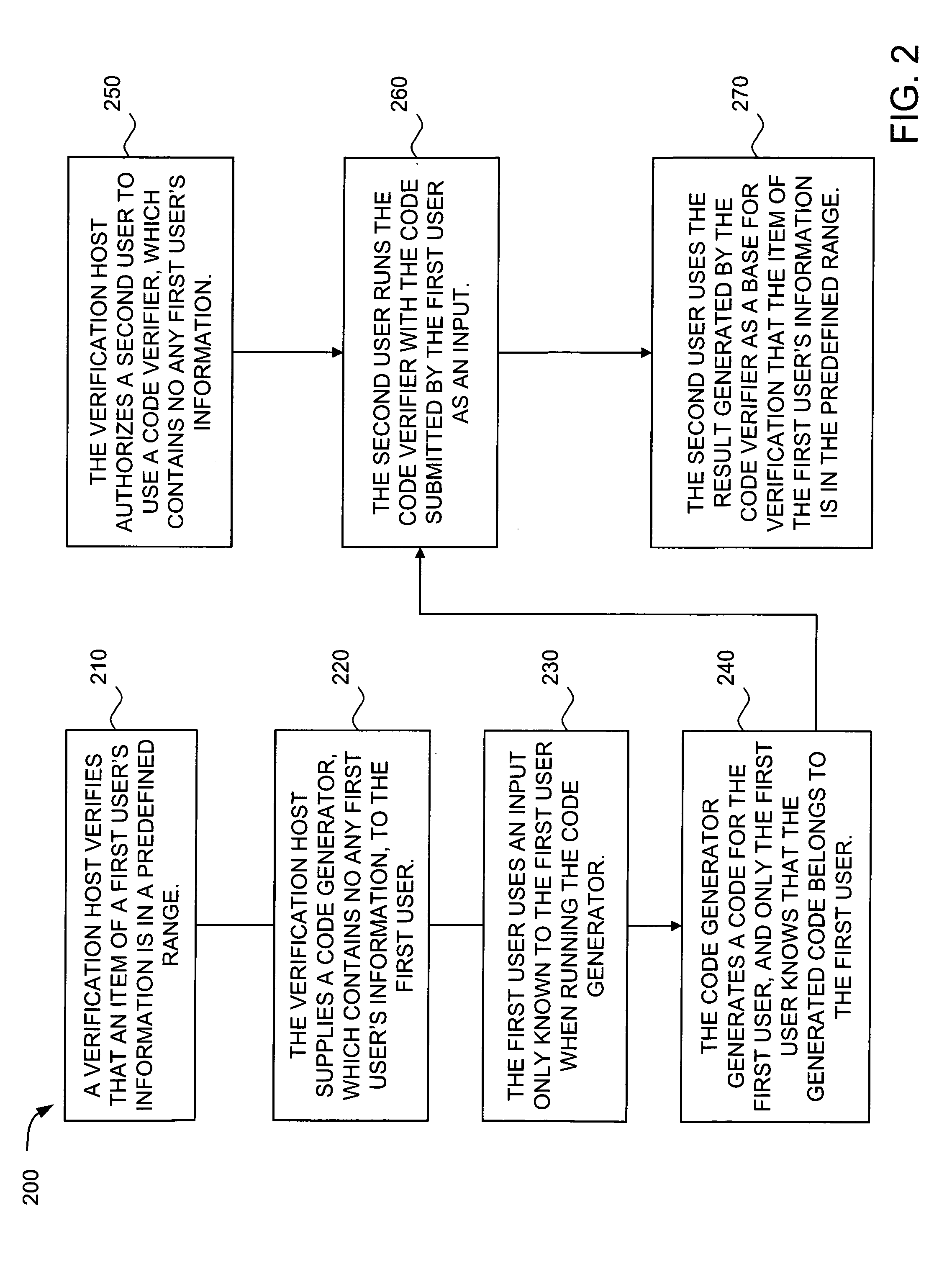Method and system for anonymous information verification
a technology of anonymous information and verification method, applied in the field of anonymous information verification method and system, can solve the problems of inability to verify the answer of customers, the approach, and the difficulty of traditional verification method of personal information by showing driver license card, and achieve the effects of reducing the probability of unauthorized entity breaking the cod
- Summary
- Abstract
- Description
- Claims
- Application Information
AI Technical Summary
Benefits of technology
Problems solved by technology
Method used
Image
Examples
Embodiment Construction
[0024]The following detailed description of implementations consistent with the principles of the invention refers to the accompanying drawings. The same reference numbers in different drawings may identify the same or similar elements. Also, the following detailed description does not limit the invention. Instead, the scope of the invention is defined by the appended claims and their equivalents.
[0025]Implementations consistent with the principles of the invention provide a generic method and system to generate a code, which can prove that an item of a person's information or an organization's information falls into a predefined range without revealing the person's identity or the organization's identity in the verification process.
Exemplary System and Method
[0026]FIG. 1 illustrates an exemplary system 100 in which apparatuses and methods, consistent with the principles of the invention, may be implemented. As illustrated, system 100 may include verification host 110, which provide...
PUM
 Login to View More
Login to View More Abstract
Description
Claims
Application Information
 Login to View More
Login to View More - R&D
- Intellectual Property
- Life Sciences
- Materials
- Tech Scout
- Unparalleled Data Quality
- Higher Quality Content
- 60% Fewer Hallucinations
Browse by: Latest US Patents, China's latest patents, Technical Efficacy Thesaurus, Application Domain, Technology Topic, Popular Technical Reports.
© 2025 PatSnap. All rights reserved.Legal|Privacy policy|Modern Slavery Act Transparency Statement|Sitemap|About US| Contact US: help@patsnap.com



